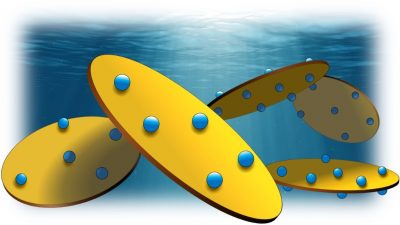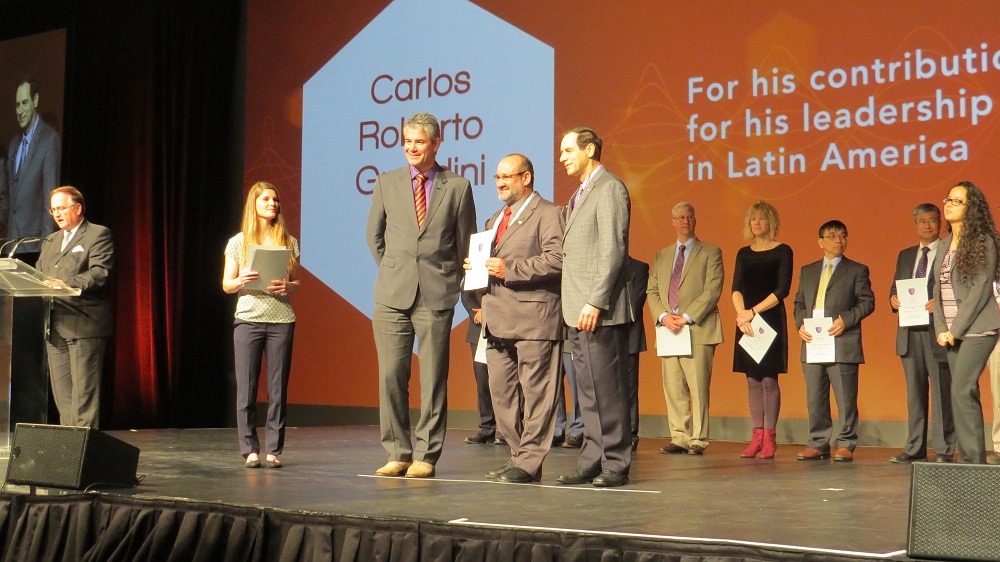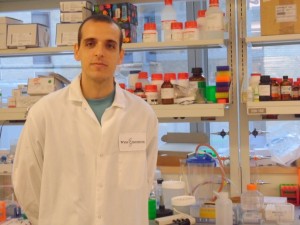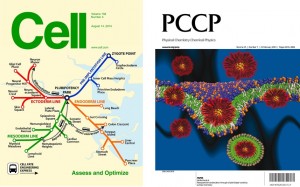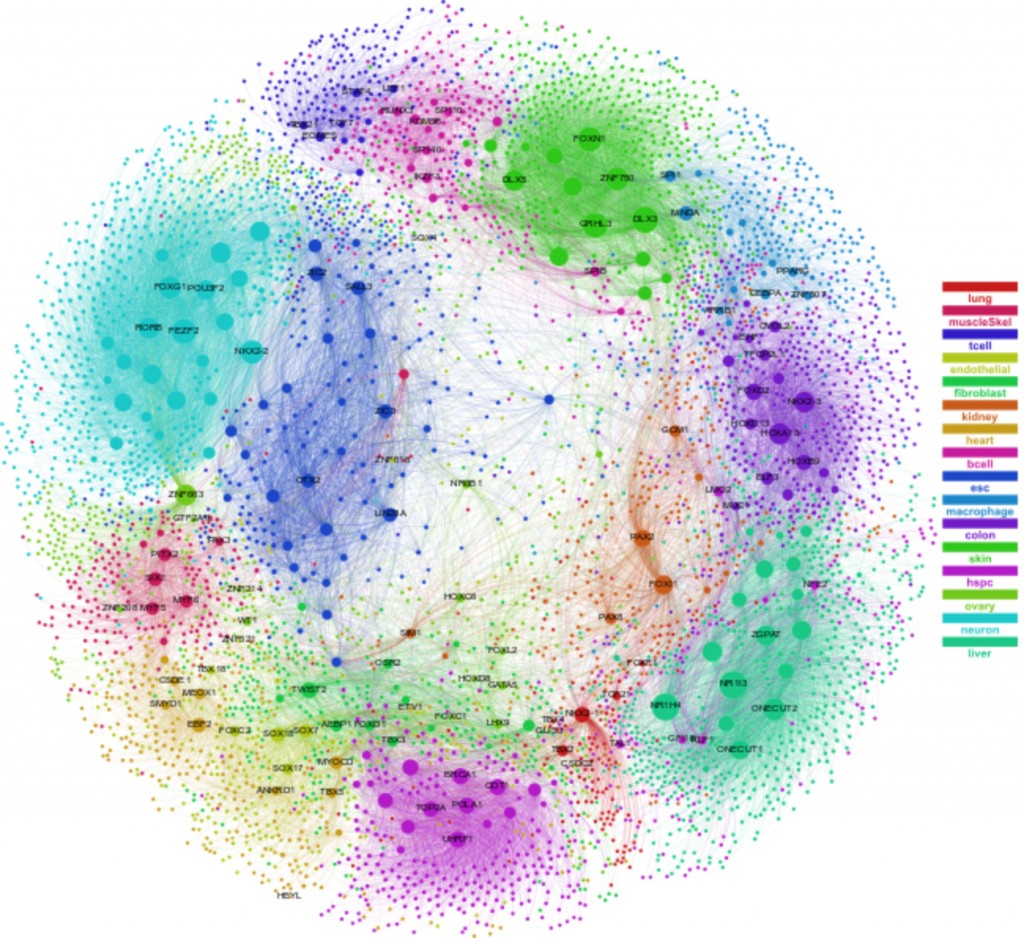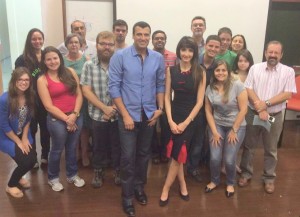[Paper: Antimicrobial Activity and Cytotoxicity to Tumor Cells of Nitric Oxide Donor and Silver Nanoparticles Containing PVA/PEG Films for Topical Applications. Wallace R. Rolim, Joana C. Pieretti, Débora L. S. Renó, Bruna A. Lima, Mônica H. M. Nascimento, Felipe N. Ambrosio, Christiane B. Lombello, Marcelo Brocchi, Ana Carolina S. de Souza, and Amedea B. Seabra. ACS Appl. Mater. Interfaces, 2019, 11 (6), pp 6589–6604. DOI: 10.1021/acsami.8b19021. ]
Synergistic anticancer films
A team of researchers from Brazilian universities developed a new film material that contains and releases, simultaneously, silver nanoparticles (AgNPs) and nitric oxide (NO) – two active substances known for their antimicrobial and anticancer activity. Tested by the scientific team, the material proved to be effective in eliminating various types of bacteria and cells from certain types of cancer. The characteristics of the film make it promising to topically treat malignant tumors or infectious lesions.
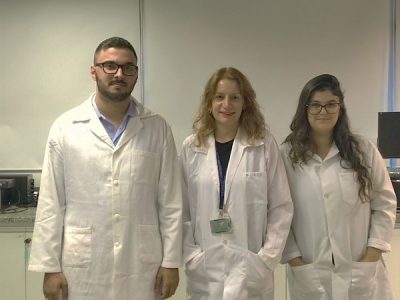
The study, recently published in ACS Applied Materials & Interfaces (Impact Factor 8.097), was developed during the Master’s research work of Wallace Rosado Rolim, guided by Professor Amedea Barozzi Seabra, and defended this year in the postgraduate program in Science and Chemical Technology of the Federal University of ABC (UFABC). The work also involved, through scientific collaborations, knowledge and experimental techniques of Biology and Biomedicine areas. “I emphasize the importance of interdisciplinarity and teamwork for the success of scientific and technological research,” says Professor Seabra, who is the corresponding author of the article.
The idea of developing this biomaterial (a material planned to interact with a biological system for medical diagnostic or treatment) came up in discussions between Rolim and his advisor. “We were looking for new strategies for controlled, localized and sustained release of actives such as nitric oxide molecules associated with silver nanoparticles, for biomedical applications,” reports Professor Seabra. The scientific duo had the idea of bringing together the two therapeutic assets in a single material that was able to topically release them. “We were looking for a synergistic action of these two assets,” says Seabra.
Thus, Professor Seabra and Rolim, with the collaboration of the Master’s student Joana Claudio Pieretti, endeavored to develop the material. The team was able to prepare films made from a composite material, whose matrix consists of a polymer, known as PVA, added with another polymer, called PEG, which made the matrix more flexible. Both polymers are non-toxic and biocompatible. During the preparation of the films, they added silver nanoparticles and a nitric oxide donor substance (the GSNO molecule, which, spontaneously, decompose and generate nitric oxide).
The same group prepared the silver nanoparticles using a simple, inexpensive method that is friendly with the environment and living organisms, also developed by Rolim in his Master’s work. In the method, which was reported in an article published earlier this year (https://doi.org/10.1016/j.apsusc.2018.08.203), green tea extract is used to generate the nanoparticles from silver nitrate, as shown in this figure:
In order to compare the antimicrobial and anticancer effects, the team prepared several types of films: some formed by the pure matrix (PVA/PEG), others containing silver nanoparticles or nitric oxide donors in different concentrations, and the last containing both therapeutic agents in the same matrix. After analyzing all the films using various characterization techniques to accurately determine their composition and morphology, Professor Seabra and her students studied how the release of nitric oxide and silver nanoparticles occurred.
Finally, the films were sent to the collaborators from other research groups to perform the biological assays, which were performed in vitro (i.e., outside living organisms and within environments with controlled conditions). At UFABC, the groups of professors Ana Carolina Santos de Souza Galvão and Christiane Bertachini Lombello focused on the anticancer action of the biomaterial, using cervical and prostate cancer cells. On the other hand, the tests related to the antibacterial activity of the films were carried out at the São Paulo State University of Campinas (UNICAMP), by Professor Marcelo Brocchi’s group, which involved tests with several types of bacteria, including the well-known Escherichia coli and Staphylococus aureus.
The tests showed that the films containing both therapeutic assets presented the best results in the elimination of bacteria and mainly of cancerous cells, as this figure illustrates:
As a result, the synergism between silver and nitric oxide nanoparticles, which Seabra and Rolim had looked for since the beginning of the Master’s research work, was proven. In one of the assays, to cite one example, less than 25% of the cancer cells remained alive (viable) after being treated with these films for 24 hours.
The material developed by the UFABC team brings the possibility of implementing a new therapeutic strategy for some cancerous tumors and infectious lesions, based on the simultaneous release of nitric oxide and silver nanoparticles, directly at the affected site, from a film. Seabra explains that “In practice, this film can be applied, for example, in a tissue (such as the skin or mucosa) or an organ, for antimicrobial or antitumor actions.” By releasing therapeutic amounts of the agents directly at the site of interest, it avoids unwanted release in healthy organs and/or tissues and thus prevents possible side effects, Seabra adds.
This work received financial support from the Brazilian agencies CNPq, FAPESP and CAPES. The first author of the paper, Wallace Rosado Rolim, developed his master’s research work with a grant from UFABC.




